
Roots
Consider the gentle whisper of the wind across ancient lands, carrying with it stories of ingenuity and deep connection to the earth. Within the vast expanse of Africa, where sun-drenched plains meet lush forests, hair has always held a place beyond mere appearance. It served as a living chronicle, a declaration, and a shield.
The story of hair protection in Africa begins not with trends or fleeting styles, but with the very breath of life and the elements that shaped it. It is a narrative of resilience, a testament to ancestral wisdom that saw hair as a conduit for more than just beauty; it was a link to heritage, community, and the spiritual world.
For centuries, before the world beyond Africa’s shores began to dictate norms, communities across the continent understood the intrinsic value of their hair. Its coiled, spiraled, and textured forms, while visually striking, also possessed a natural ability to defy the elements, provided cared for with purpose. This understanding shaped the earliest practices of hair care, moving far beyond simple adornment to encompass a profound protective instinct.

Early Environmental Adaptations
Life across Africa’s diverse landscapes presented unique challenges for hair. The relentless sun, ever-present dust, and varied humidity levels called for ingenious solutions. Early African communities recognized these environmental pressures and developed methods to shield their hair from damage.
They were keen observers of nature, drawing upon the bounty of their surroundings to craft protective measures. This practical application of natural resources formed the bedrock of their hair care traditions.
Think of the arid regions, where moisture was precious. Hair, left exposed, would quickly become brittle and dry. In contrast, humid climates presented challenges with frizz and tangling.
Indigenous peoples responded by using substances readily available to them, creating a harmonious relationship between human need and natural provision. These were not just about comfort; they were about maintaining the health and integrity of the hair, allowing it to continue its role as a marker of identity and well-being.

Hair as a Symbol of Identity and Status
Long before written records for many societies, hair served as a powerful visual language. A person’s hairstyle could communicate a wealth of information ❉ their age, marital status, social standing, religious affiliation, and even their tribal origin. This societal significance naturally extended to the care and protection of hair, as maintaining its condition was akin to upholding one’s place within the community.
For instance, in West African societies as early as the 15th century, specific hair patterns were utilized to convey messages about social status and family background. A complex coiffure might signal royalty or a high position, while a simpler style could denote youth or a particular life stage. This meant that protecting the hair was not merely a personal act; it was a communal responsibility, reflecting and reinforcing the social fabric. The intricate designs often took hours, even days, to create, signifying the value placed upon them and the communal effort involved in their upkeep.
Ancient African hair practices were not just about appearance; they served as a vital language of identity, status, and connection to the spiritual world.
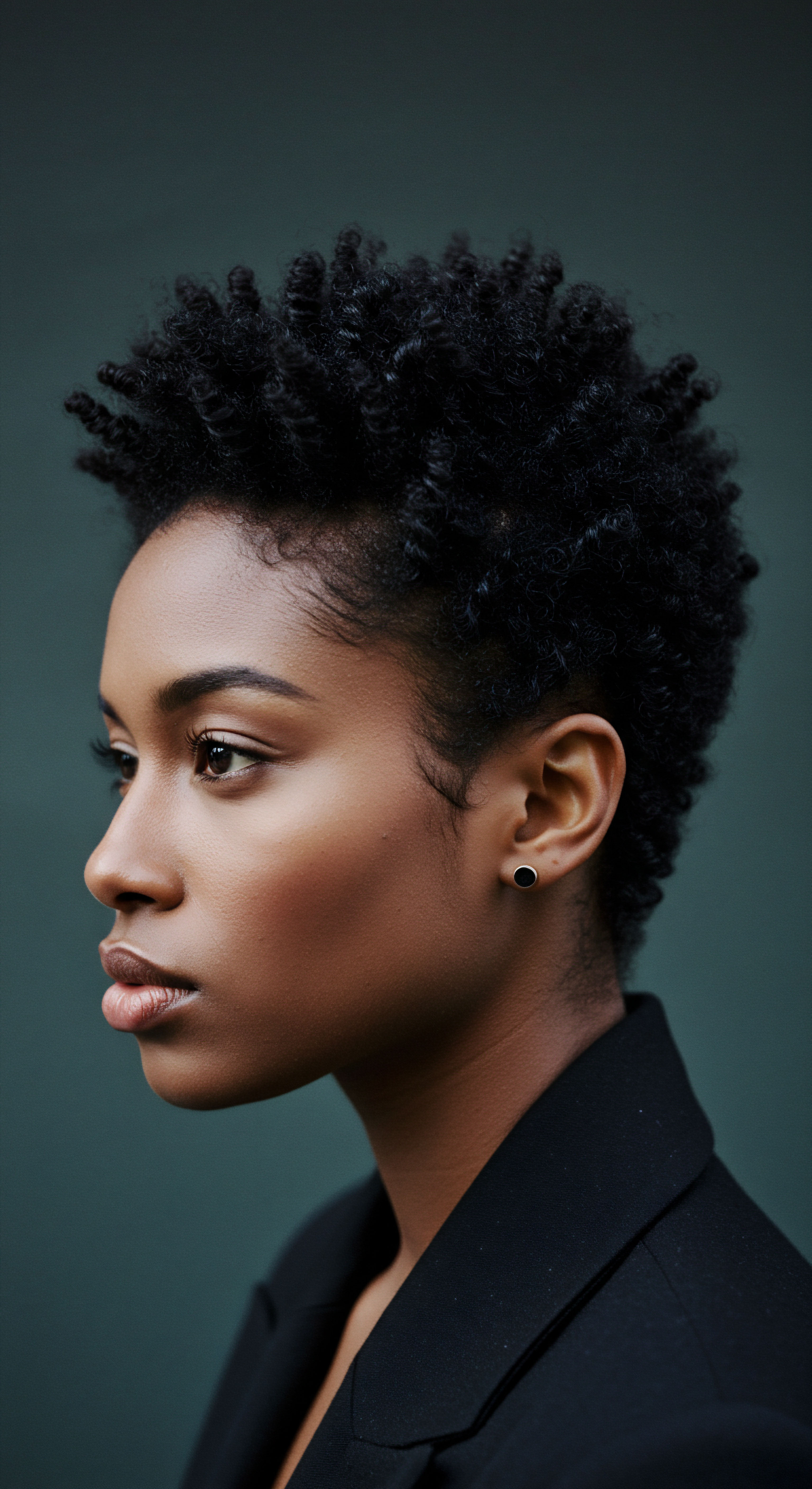
Indigenous Materials and Early Formulations
The initial forms of hair protection arose from the natural world. African communities discovered and refined the use of various plant-based oils, butters, clays, and other natural elements to condition, cleanse, and shield their hair. These substances provided physical barriers against environmental aggressors and offered deep nourishment.
- Shea Butter ❉ From the Karite tree, particularly prevalent in the Sahel belt, shea butter was a widely used base for many hair preparations. It offered deep moisture and protection from the sun, rich in vitamins and believed to have UV protection properties.
- Plant Oils ❉ Oils from coconut, marula, and baobab were prized for their conditioning properties. Marula oil, from Mozambique and South Africa, was used for skin and hair, containing oleic acid and antioxidants. Baobab oil, rich in vitamins A, D, E, F, and omega fatty acids, strengthened strands and repaired damage.
- Clays and Earth Pigments ❉ Rhassoul clay from Morocco served as a gentle cleanser, removing impurities without stripping natural oils. The Himba people of Namibia, for example, used a mixture of red ochre paste, butter, and herbs to coat their hair, providing sun protection and symbolizing their connection to the earth. This practice created a literal protective layer against the harsh climate.
- Herbs and Botanicals ❉ Various herbs were incorporated for their beneficial properties. Chebe powder, from Chad, made from ground seeds, was used to retain moisture and reduce breakage, promoting longer hair. Rooibos tea from South Africa, with its antioxidants and minerals, supported healthy growth and prevented premature graying.
These materials were not simply applied; they were often blended and prepared through methods passed down through generations, creating specific formulations tailored to local needs and hair types. The deliberate selection and preparation of these natural resources speak to a sophisticated understanding of hair biology and environmental factors, long before modern scientific terminology existed.
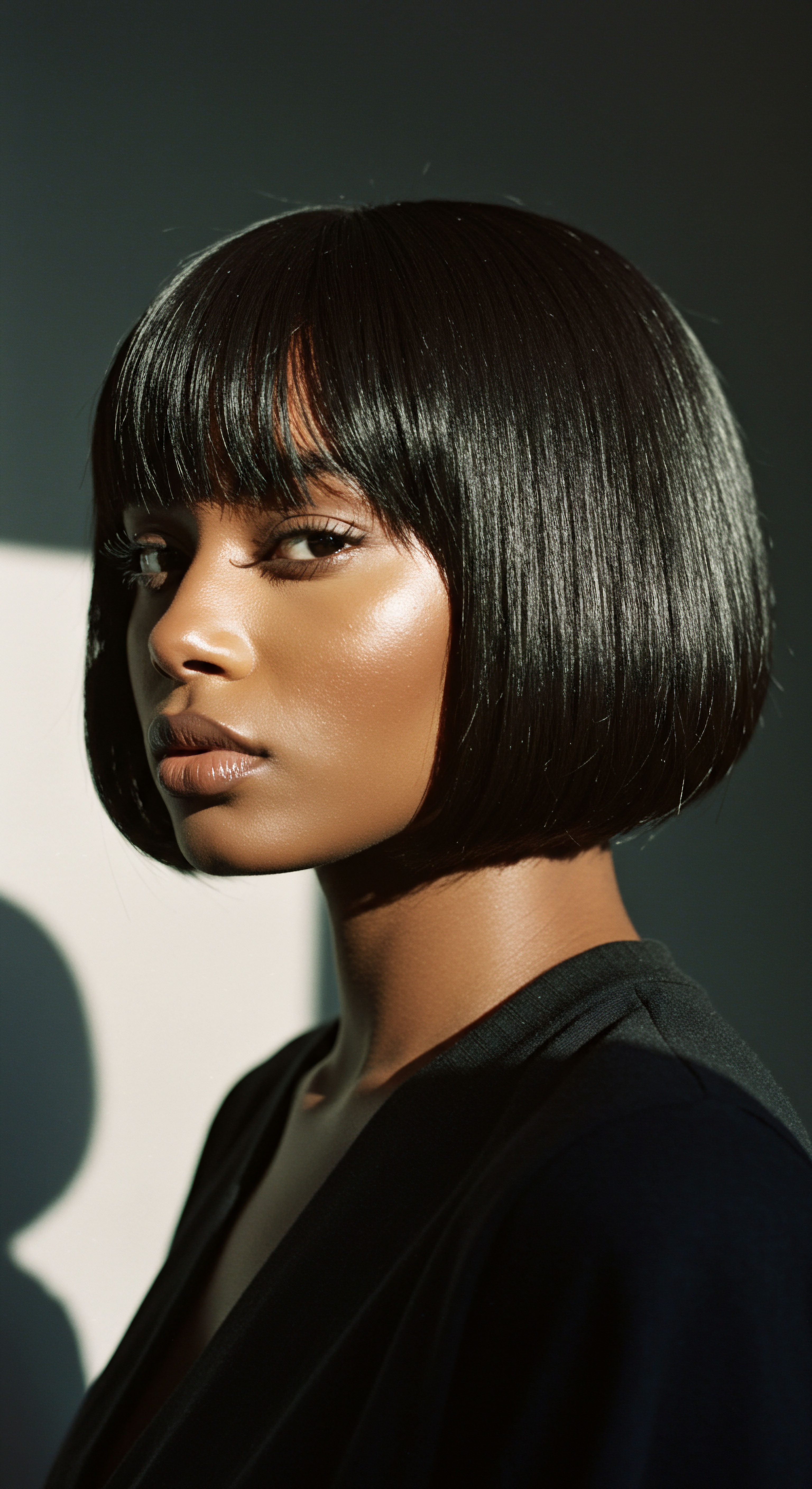
Ritual
Moving beyond the fundamental necessity of protection, the story of African hair care unfolds into a rich tapestry of ritual and shared experience. Here, practical wisdom meets artistic expression, and the daily act of caring for hair becomes a moment of connection, instruction, and quiet strength. The methods employed were not arbitrary; they were refined over centuries, each technique serving a purpose, both tangible and symbolic.
The practices of styling and maintaining hair became deeply embedded in the social fabric, often occurring in communal settings. These gatherings were not merely for aesthetic purposes; they provided spaces for intergenerational learning, storytelling, and the reinforcement of community bonds. The very act of preparing and styling hair was a practice of mindful care, a dedication to well-being that extended beyond the individual.

The Practice of Protective Styling Across Time
Protective styling, as we know it today, finds its deepest roots in ancient African traditions. Styles such as braids, twists, and locs were not just visually appealing; they were designed to safeguard the hair from environmental wear, minimize manipulation, and retain moisture. This approach allowed hair to rest and grow, reducing breakage and preserving length.
Archaeological evidence suggests that braiding techniques, including cornrows, date back to at least 3500 BC, with findings in rock paintings from the Sahara desert. These styles were remarkably versatile, adapting to different hair textures and lengths, and could be adorned with shells, beads, and other natural elements to further signify status or personal taste. The enduring presence of these styles through millennia speaks to their efficacy and cultural significance.
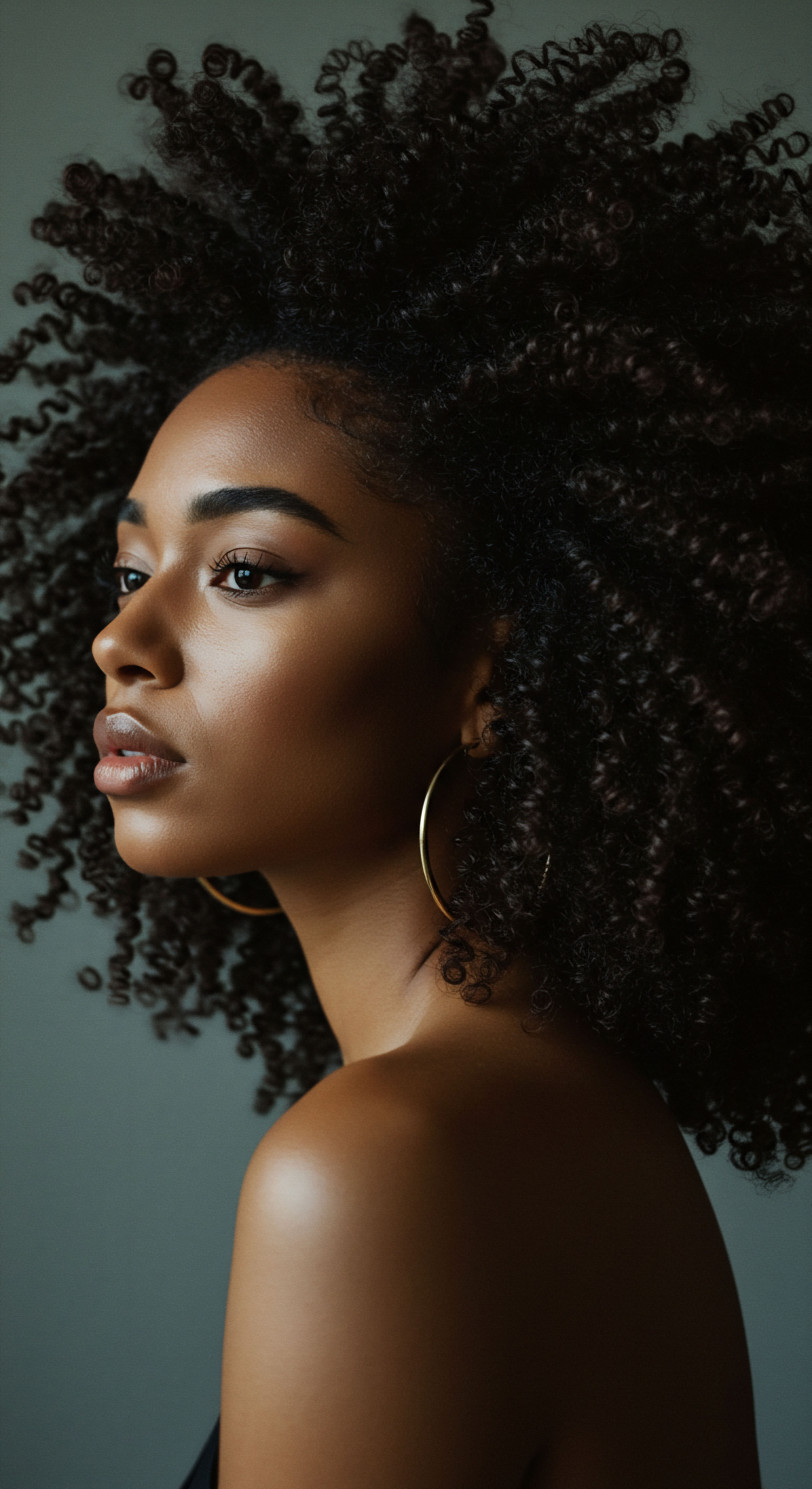
What Ancient Styling Methods Still Hold Relevance?
Many ancient African styling methods remain highly relevant in contemporary hair care. The core principles of these techniques – minimizing manipulation, protecting ends, and promoting moisture retention – are universally recognized as beneficial for textured hair.
- Braiding ❉ From simple plaits to intricate cornrows, braiding has always been a cornerstone of African hair care. It seals the hair, reduces tangling, and protects strands from external stressors. Braids were also used to convey messages and even maps for escape during the transatlantic slave trade, underscoring their practical utility beyond aesthetics.
- Twisting ❉ Similar to braiding, twisting involves coiling two strands of hair around each other. This method offers a softer hold than braids, often used for daily protection or as a precursor to other styles.
- Locs ❉ While often associated with modern Rastafarian culture, historical evidence suggests forms of matted or twisted hair existed in ancient Egypt and other cultures as early as 2500 BC. These styles naturally protect hair by allowing it to compact and form resilient strands.
- African Threading ❉ This technique, involving wrapping hair with thread, was used in West and Central Africa to stretch and protect hair, aiding in length retention and creating various styles. It reduced breakage by holding sections of hair securely.
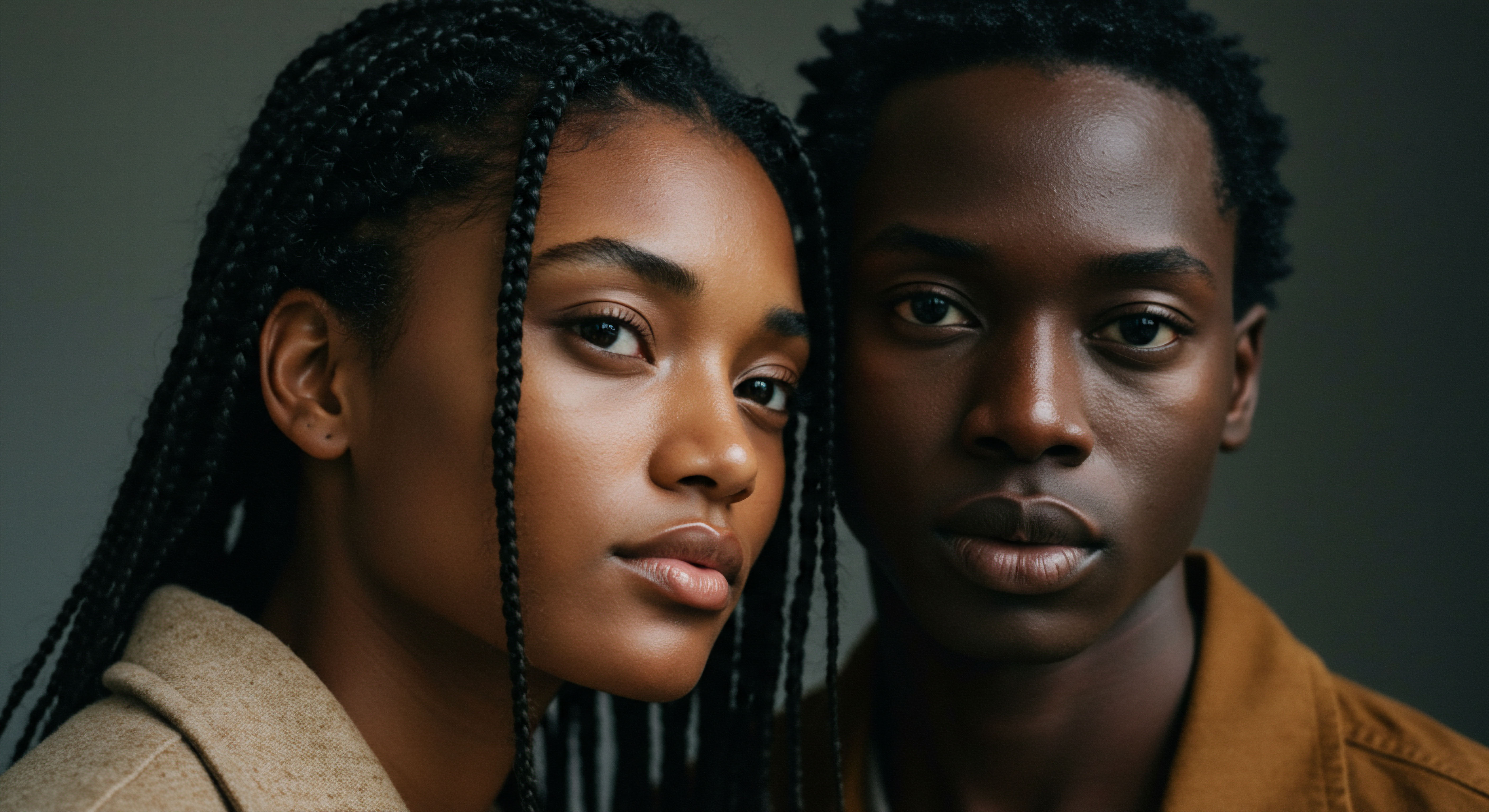
Tools and Accessories for Hair Protection
The creation and maintenance of these styles necessitated specific tools and accessories, often crafted from natural materials. These tools were not just functional; they were often objects of beauty and cultural significance themselves.
Combs and Picks ❉ Early combs were fashioned from wood, bone, or metal, designed to navigate the unique characteristics of textured hair. Archaeological discoveries in ancient Kush and Kemet (modern Sudan and Egypt) have unearthed combs dating back 7,000 years, often decorated with symbols reflecting respect for nature. These tools were crucial for detangling and shaping hair without causing undue stress.
Headwraps and Coverings ❉ Beyond styling, head coverings served a dual purpose of protection and cultural expression. Headwraps shielded hair from sun, dust, and other environmental factors, while also conveying social information such as marital status or tribal affiliation. During the transatlantic slave trade, headwraps became a powerful symbol of dignity and resistance, protecting hair under harsh conditions while preserving cultural identity.
Hair rituals in Africa were communal acts, reinforcing social bonds and transmitting ancestral wisdom through shared practices of care and adornment.
| Material Type Plant Butters |
| Source Shea, Cocoa, Mango |
| Primary Protective Benefit Moisture sealing, UV shield |
| Material Type Natural Oils |
| Source Coconut, Marula, Baobab |
| Primary Protective Benefit Lubrication, strength, scalp health |
| Material Type Clays |
| Source Rhassoul, Red Ochre |
| Primary Protective Benefit Cleansing, sun protection, mineral supply |
| Material Type Botanicals |
| Source Chebe, Rooibos, Hibiscus |
| Primary Protective Benefit Length retention, growth support, antioxidant shield |
| Material Type These natural resources provided a comprehensive approach to hair health and preservation. |

Nighttime Rituals and Hair Preservation
The concern for hair health extended beyond daytime activities into nighttime practices. Just as modern hair care advocates emphasize sleep protection, ancient African communities recognized the need to preserve styles and moisture overnight.
While specific historical details on nighttime hair coverings are less documented than daytime styles, the widespread use of headwraps and the communal value placed on hair suggest that protective measures during sleep were likely common. Covering hair at night would have helped maintain intricate styles, prevent tangling, and preserve the moisture from daily applications of oils and butters, ensuring the longevity of labor-intensive coiffures. This foresight speaks to a holistic approach to hair care, where protection was an ongoing commitment.

Relay
As we consider the echoes of ancient practices in our modern world, a deeper question arises ❉ how have these historical origins of hair protection in Africa continued to shape identity, resistance, and well-being through shifting eras? The journey of African hair care extends beyond the practical, delving into profound cultural meaning and enduring societal impact. It is a story not only of survival but of the steadfast assertion of self in the face of immense pressure.
The layers of meaning attached to hair in Africa run deep, touching upon spiritual beliefs, social structures, and personal autonomy. To truly grasp the breadth of hair protection in this context, one must appreciate the interwoven threads of history, science, and cultural memory that have sustained these practices through time.
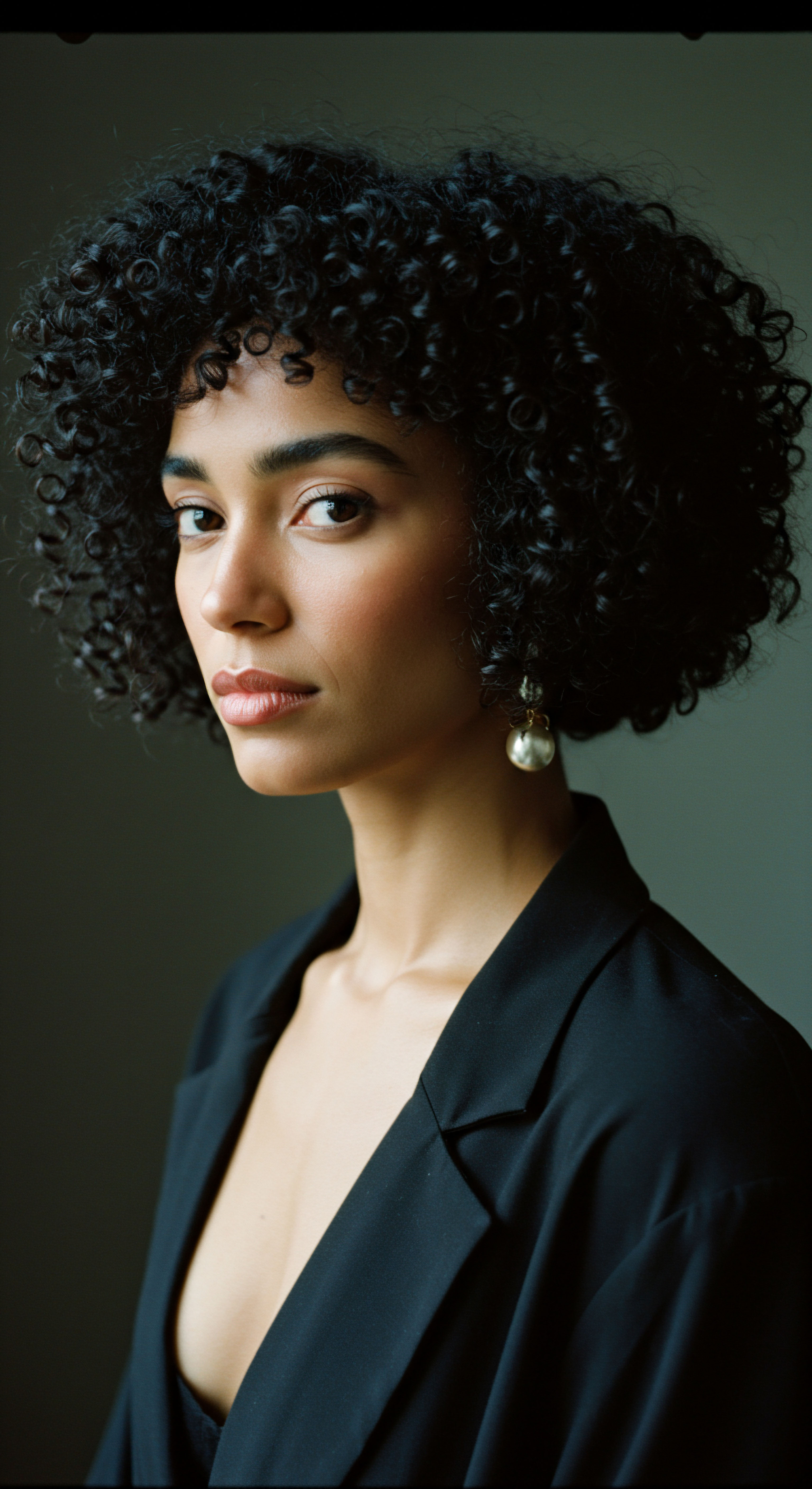
Hair as a Spiritual and Social Conduit
In many African societies, hair was considered the most elevated part of the body, a direct link to the divine and ancestral spirits. This spiritual connection imbued hair care with a sacred quality, making its protection not just a physical act but a spiritual duty. Hairdressers, for this reason, often held revered positions within communities.
For instance, the Yoruba people of Nigeria regarded hair as sacred, believing that braided hair could send messages to the gods. This belief system naturally fostered practices that safeguarded the hair, as any harm to it could disrupt one’s connection to higher powers. The care taken in styling and adorning hair was a form of reverence, a way to honor one’s spiritual self and lineage. The act of communal hair styling itself became a ritual, a moment for sharing stories, wisdom, and reinforcing collective identity.

The Impact of Colonialism on Hair Practices
The arrival of colonial powers brought a brutal disruption to these established traditions. European colonizers often viewed African hair and traditional styles through a lens of prejudice, labeling them as “unkempt,” “unprofessional,” or even “savage”. This cultural aggression aimed to strip Africans of their identity and impose Eurocentric beauty standards.
A significant, yet often understated, aspect of colonial dehumanization involved the forced shaving of hair among enslaved Africans. This act served as a deliberate attempt to sever ties to cultural heritage and diminish personal pride. The psychological repercussions of this enforced change were immense, fostering a deep-seated anxiety about natural hair that, for many, persists to this day. The historical preference for straightened hair, even post-emancipation, often stemmed from a need to conform to these imposed standards to gain social and economic acceptance.
Colonialism systematically attacked African hair practices, aiming to dismantle cultural identity, yet these traditions proved resilient, adapting as symbols of defiance.

How Did African Hair Protection Survive Colonial Eras?
Despite immense pressure, traditional African hair protection practices did not vanish; they adapted and transformed into powerful symbols of resistance and cultural preservation. This enduring spirit speaks volumes about the intrinsic value placed on hair.
- Hidden Resistance ❉ Enslaved African women, despite harsh conditions, continued to braid hair, sometimes incorporating rice seeds for survival or creating patterns that served as escape maps. This transformed protective styling into a clandestine act of defiance and survival.
- Symbolic Defiance ❉ In later periods, particularly during independence movements, natural hair styles like dreadlocks became visible statements of resistance against colonial rule. The Mau Mau fighters in Kenya, for example, wore dreadlocks as a sign of defiance and solidarity against the British.
- Communal Memory ❉ The oral tradition of passing down hair care knowledge and styling techniques from generation to generation ensured that these practices persisted, even when overt cultural expression was suppressed.
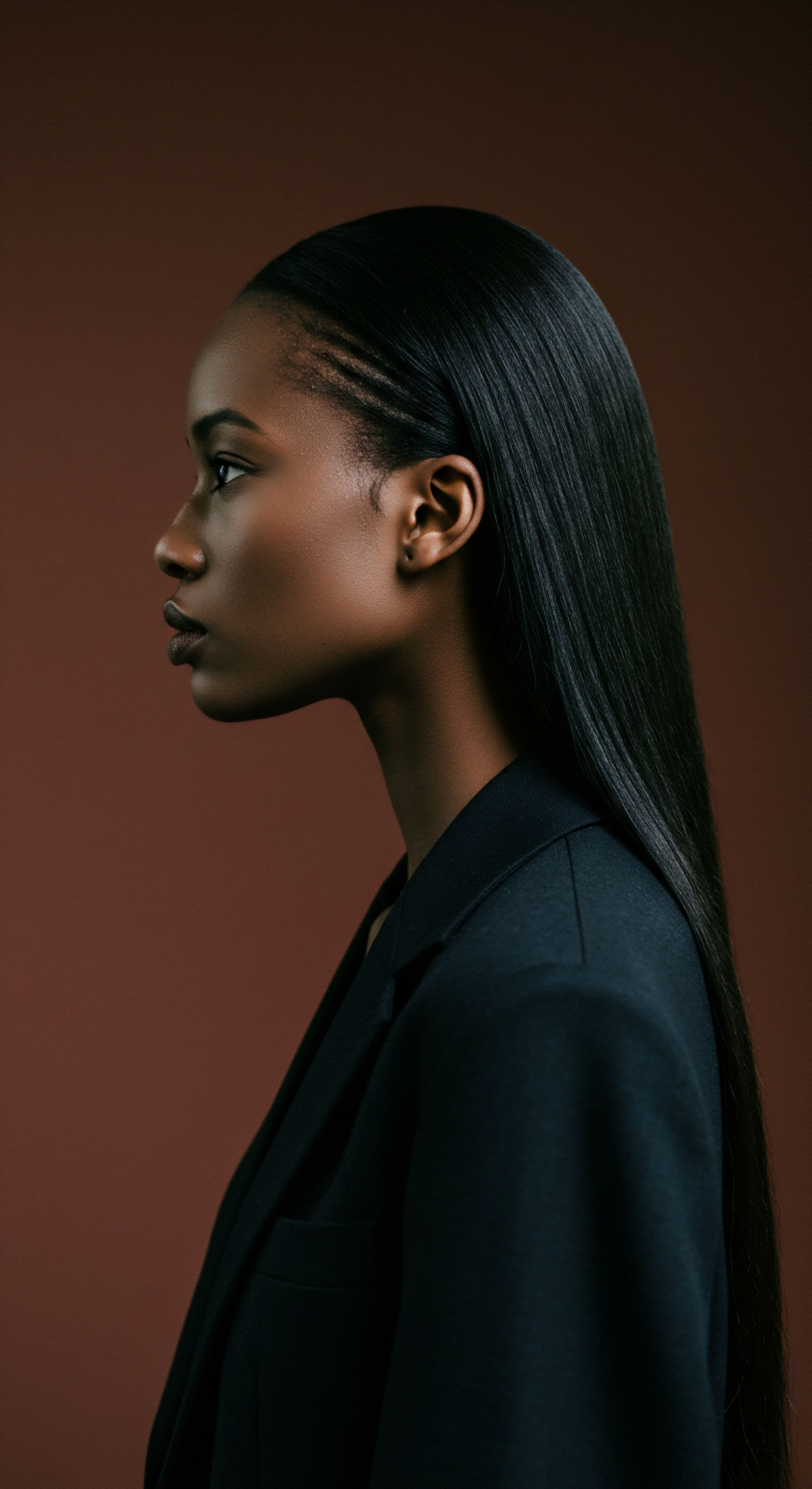
Modern Scientific Understanding and Cultural Continuity
Today, modern science increasingly validates the protective qualities of traditional African hair care practices. The very structure of textured hair, with its unique curl patterns, makes it prone to dryness and breakage if not handled with specific care. Traditional protective styles and natural ingredients align perfectly with scientific principles of hair health.
For example, studies show that protective styles like braids and twists minimize mechanical stress on hair strands, reduce exposure to environmental pollutants, and help retain internal moisture, all of which contribute to length retention and overall hair integrity. The historical use of natural oils and butters, now understood for their occlusive and emollient properties, effectively seals in moisture and provides a barrier against external damage.
Consider the ongoing societal perceptions surrounding textured hair. A 2017 study titled “The ‘Good Hair’ Study,” which examined attitudes towards the hair of women of African descent in the US, found that the Afro hairstyle was often viewed as less attractive and less professional compared to long, straight hair. This highlights the persistent influence of historical biases, yet also underscores the resilience of those who choose to wear their hair in traditional or natural styles as an act of self-acceptance and cultural affirmation. This particular finding, while perhaps unsettling, offers a direct look at the enduring impact of historical narratives on contemporary beauty standards and professional environments.
The contemporary natural hair movement, globally, is a direct continuation of this historical legacy. It represents a conscious choice to return to and celebrate the inherent beauty and resilience of textured hair, drawing directly from the protective practices and cultural significance of ancient African traditions. This movement is not merely about aesthetics; it is a profound reclamation of identity, heritage, and autonomy, echoing the very origins of hair protection in Africa.
The connection between ancient wisdom and modern practice is evident in the resurgence of traditional African ingredients.
- Chebe Powder ❉ This Chadian staple, used for centuries to prevent breakage and promote length, is now gaining global recognition for its hair-strengthening properties.
- African Black Soap ❉ Traditionally made from plantain skins and cocoa pods, this cleanser is valued for its gentle yet effective cleansing, nourishing the scalp and addressing various conditions.
- Baobab Oil ❉ Extracted from the “Tree of Life,” this nutrient-rich oil is praised for its ability to moisturize dry hair, strengthen weak strands, and protect against environmental harm.
These natural elements, once localized practices, are now recognized worldwide for their efficacy, demonstrating the timeless wisdom embedded in African hair care. The scientific community is beginning to explore the mechanisms behind these traditional remedies, further solidifying their value.

Reflection
The journey through the historical origins of hair protection in Africa reveals more than just techniques and materials; it unveils a profound philosophy of being. Hair, in its many forms and states, stands as a quiet yet powerful testament to human adaptability, cultural depth, and unwavering spirit. It invites us to consider how our personal care routines connect us to wider narratives, to ancestral wisdom, and to the very earth beneath our feet. As we continue to care for our textured strands, we carry forward a legacy of protection, not just for the hair itself, but for the stories, identities, and resilience it represents.

References
- Omotos, Adetutu. “The Symbolism of Hair in Traditional African Culture.” Journal of Pan African Studies, 2018.
- Tharps, Lori L. and Ayana Byrd. Hair Story ❉ Untangling the Roots of Black Hair in America. St. Martin’s Press, 2001.
- Sieber, Roy, and Frank Herreman. Hair in African Art and Culture. Museum for African Art, 2000.
- Banks, Ingrid. Hair Matters ❉ Beauty, Power, and Black Women’s Consciousness. New York University Press, 2000.
- Gordon, Mark. The African Diaspora ❉ A History Through Culture. Oxford University Press, 2008.
- Mercer, Kobena. Welcome to the Jungle ❉ New Positions in Black Cultural Studies. Routledge, 1994.
- Arnoldi, Mary Jo, and Christine Mullen Kreamer. African Material Culture. Indiana University Press, 1995.
- Randle, Maurice. Hair and Race ❉ A Sociological Study. University of Chicago Press, 2015.
- Essel, Osuanyi Quaicoo. “Conflicting Tensions in Decolonising Proscribed Afrocentric Hair Beauty Culture Standards in Ghanaian Senior High Schools.” International Journal of Research and Scientific Innovation (IJRSI), vol. 8, no. 3, 2021.
- Hallpike, C. R. “Social Hair.” Man, vol. 4, no. 2, 1969, pp. 256-264.
- Bodenhorn, Howard, and Christopher Ruebeck. “Colourism and African American Wealth ❉ Evidence from the Nineteenth Century South.” Journal of Population Economics, vol. 20, no. 3, 2007, pp. 599-620.
- Ani, Marimba. Let the Circle Be Unbroken ❉ The Implications of African Spirituality in the Diaspora. Nkonimo, 2006.
- Jere-Malanda, R. “Black Women’s Politically Correct Hair.” New African Woman, vol. 14, 2008, pp. 14-18.
- Morrow, W. 400 Years Without a Comb ❉ The Untold Story. Black Publishers, 1973.
- Gates, R. “Forms of Hair in South African Races.” Man, vol. 57, 1957, pp. 81-83.